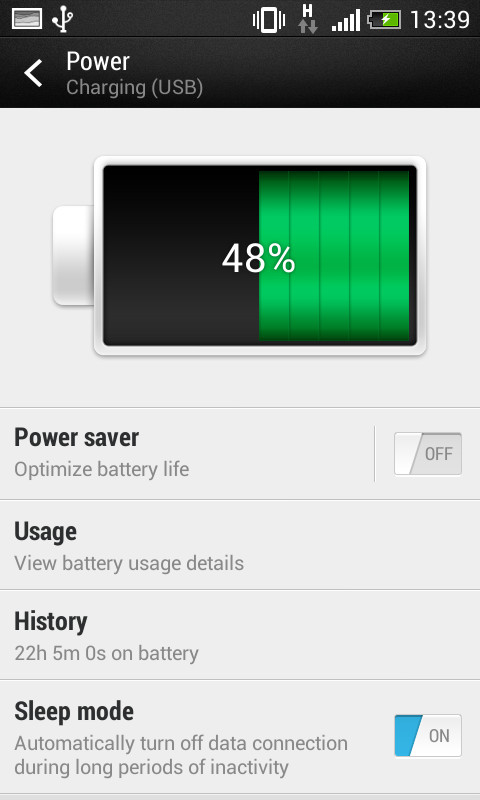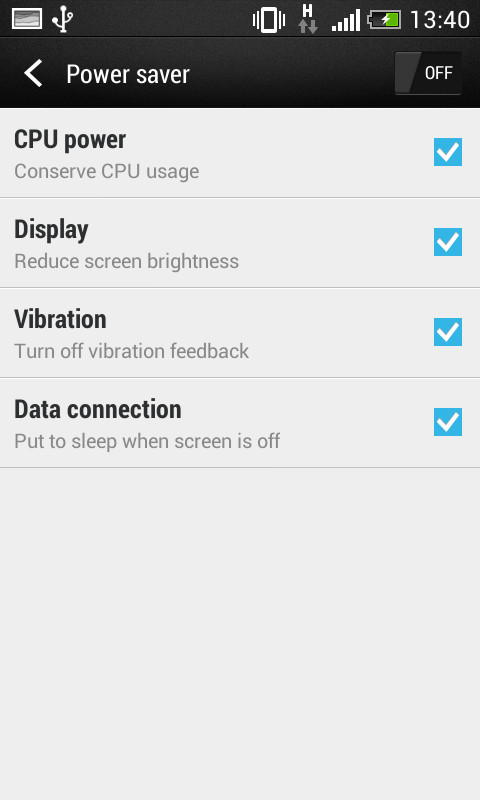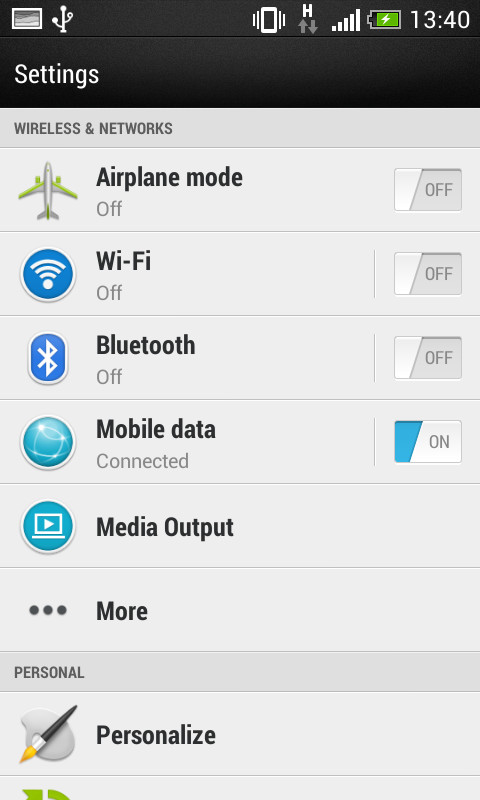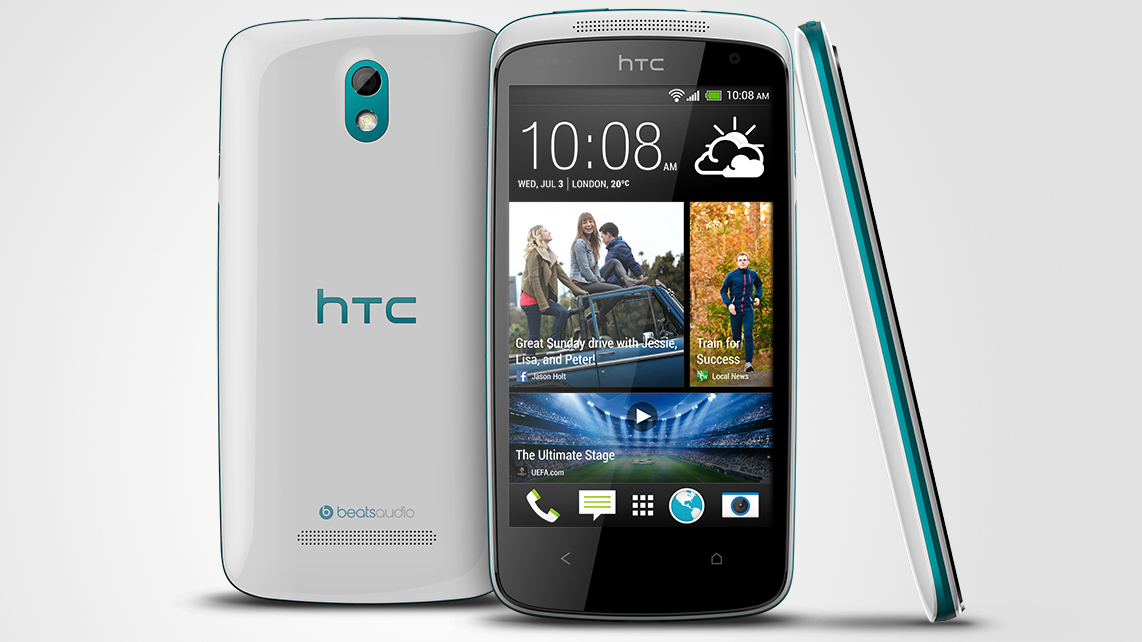Why you can trust TechRadar
In our ever increasingly hectic lifestyles, we expect more and more from our smartphones. Consequently, we expect more and more from their supplied power packs. As many of us don't carry around extra, its vital that the on board supply is sufficient.

Thankfully, we can put many fears to bed because the 1800mAh battery that sits behind the plastic casing of the Desire 500, is more than sufficient.
We managed to get it through a day of normal use, with Wi-Fi connecting and disconnecting a fair few times, and sending a large amount of text and Facebook messages.
This could be in part because of the Sleep Mode that HTC has fitted its devices with, as it shuts down the data connection when the phone hasn't been used for a while.
Power saving mode is also easily engaged via the notifications bar, allowing you to limit CPU power, the display brightness, disable vibration and data connections
Given that HTC's have previously been known for their unpredictability when it comes to battery life, it is nice to that its current devices seem more than able to keep up with our modern life styles.

A lot of this might be able to be attributed to the better software that Google has put out, as Android Jelly Bean runs Project Butter. This keeps everything running a lot smoother and as such, keeps the battery running a little longer.
We did find that we were able to keep the screen on auto-brightness, as it was able to keep up with the variety of bright situations we threw at it, and the smaller size will have also helped.
Having 1GB RAM also takes the strain off the processor, one that we thought might HAVE harmed the life of the battery as more cores means more power needed.
Connectivity
When it comes to connectivity, the HTC Desire 500 can hardly be called lacking. It comes with the wide range of features that the modern smartphones now ship with.
Bluetooth? Yes, 4.0 with A2DP. GPS? Yes, with A-GPS support (no GLONASS). The Desire 500 also comes with 3G (not 4G) mobile internet to HSDPA 7.2 / HSUPA 5.76 Mbps.

The HTC Desire 500 does also come with Wi-Fi on board, to 802.11 b/g/n standard, meaning that there is no fancy dual-band technology. The charging port also doubles up as a microUSB port for connection to a PC.
We were also glad to see that the Desire 500 comes with DLNA streaming inside, something that we commented upon during the media section. This is something that we are seeing on a greater number of devices, so its inclusion here was nice.
NFC is also bundled inside the Desire 500, which can be enabled or disabled via the Settings menu. Portable Wi-Fi hotspots are also enabled.
As we mentioned, connecting to a PC is done via a microUSB cable, that comes bundled with the Desire 500 when you purchase it.
This then gives you the option of connecting via mass storage, or via the HTC Sync app. It is a smart desktop application, which allow you to manipulate your Desire 500, changing wallpapers and setting ringtones via the PC.
In all, we can't say we were blown away by the connectivity options that are on offer with the HTC Desire 500, but at the same time we weren't ever left disappointed.
Then again, to that, HTC would need to omit Wi-Fi or mobile data for us to ever be seriously disappointed in connectivity.
